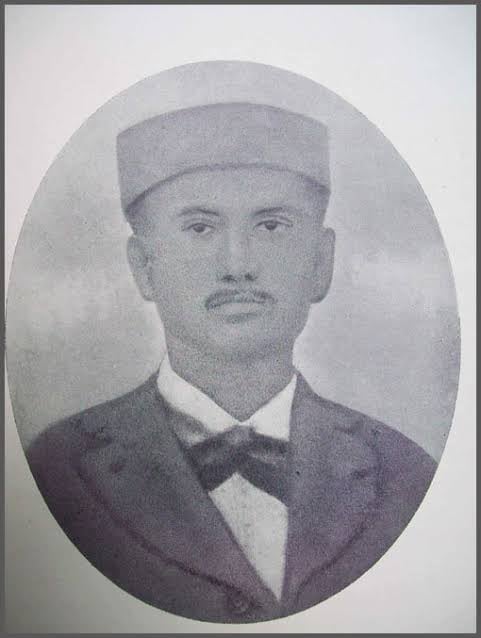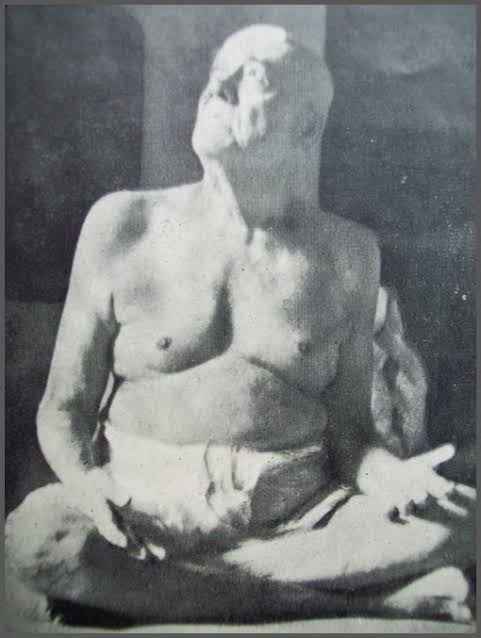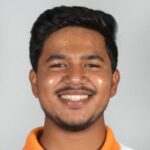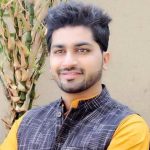Mahendranath Datta Age, Death, Wife, Family, Biography
Quick Info→
Death Cause: Natural Cause
Death Date: 15/10/1956
Age: 88 Years Old
| Bio/Wiki | |
|---|---|
| Birth Name | Mohendra Nath Datta |
| Profession | Writer |
| Famous for | Being the brother and disciple of Swami Vivekanand |
| Physical Stats & More | |
| Eye Colour | Black |
| Hair Colour | Black |
| Career | |
| Personal Life | |
| Date of Birth | 1 August 1868 (Saturday) |
| Birthplace | Mahendra Tapakshetra, Kolkata |
| Date of Death | 15 October 1956 |
| Place of Death | Kolkata |
| Age (at the time of death) | 88 Years |
| Death Cause | Natural Causes |
| Zodiac sign | Leo |
| Nationality | Indian |
| Hometown | Mahendra Tapakshetra, Kolkata |
| School | Calcutta Metropolitan Institute (1888) |
| College/University | • Scottish Church College (1891) • British Museum (1896) |
| Educational Qualification | • A degree of Faculty of Arts from Scottish Church College in 1891 • Law Degree from British Museum in 1896 |
| Religion/Religious Views | Hinduism |
| Hobbies | Reading, Travelling |
| Relationships & More | |
| Marital Status (at the time of death) | Unmarried |
| Family | |
| Parents | Father- Vishwanath Dutta (Attorney) Mother- Bhubaneswari Devi |
| Siblings | Brother- Swami Vivekanand Brother- Bhupendranath Datta |
Some Less Known Facts About Mahendranath Datta
- Throughout Mahendranath’s childhood, he studied and discussed Eastern and Western literature, science and philosophy with Sri Ramakrishnadeva and his admirers Swami Avedananda, Swami Sardananda, and Girish Ghosh.
- In his youth, he joined Brahmo Samaj led by Keshub Chandra Sen and Debendranath Tagore. There, he met Sivanath Sastri who deeply influenced him.
- Mahendranath Datta’s religious and social beliefs were shaped by Brahmo Samaj.
- After passing the Faculty of Arts examination from Scottish Church College in 1891, Mahendranath Dutta traveled to places of pilgrimage such as Haridwar and Hrishikesh to practice pious austerities.
- When Swami Sardananda left for England by ship in March 1896, a week later he also went to England for law studies in London with a ship’s fare from the Maharaja of Khetari.
- Vivekananda did not want Mahendranath to stay in England, due to financial hardship and the way he used to spend money carelessly.
- In a letter to Mrs Bull, Swami’s foreign disciple, he wrote that he wanted Mahendranath to become an electrician without studying law. “He doesn’t like to be a lawyer for the one he loves,” he said.
- However, Mahendranath Datta decided to travel on foot through various countries in Europe, North Africa, West Asia, Greece, Iran, Syria, Russia, Bulgaria.
- During his travel with Swami Vivekananda in western countries he observed that how Swami Vivekananda (Sri Narendra Nath Dutta in India) with immense power of God became a completely different man of majestic personality in western countries.
- He travelled for 5 years by himself and returned to Calcutta in 1902 AD.
- Sri Mohendra Nath Dutta travelled extensively in India and various countries of Asia and Europe and stayed there sufficiently long to study at first hand their manners and customs, art and architecture, language and tradition, agriculture and commerce.
- He is a man of vast erudition as well as of realisation, a philosopher, a social thinker, an artist, an economist and a philanthropist.
- From the book Language and Grammar & Rhetoric written by Mahendranath, it can be known that he knew many languages of the world and had deep knowledge in linguistics.
- Along with the scientific and industrial education, he has stressed the necessity of compulsory military training among our boys and girls. This compulsion is due not only to increase our military power but also to uproot theological morbidity.
- During his stay with Sri Ramakrishna he observed the actions of Sri Ramakrishna and analyzed the same with scientific approach of a keen observer. He observed how a light (Joyti) came out from the body of Sri Ramakrishna during Samadhi stage and everything and every person those who were within the periphery of that Joyti Mondal lost their own personality and became a part of the holly attachment.
- He also with his scientific and analytical mind observed ways of meditation process of Swami Vivekananda, Swami Avedananda and other Swamijies. During his stay with Swami Vivekananda in the western countries he also observed how Swami Vivekananda could spread the Joyti Mondal like his Master Sri Ramkrishna that engulfed the whole audience and made them feel the power of divinity.
- During his sojourn over the Himalayan region, he has surveyed critically the various possibilities of turning virgin soil into a great national wealth. He has given plans and methods for utilising its vast national resources.
- He has also given his valuable suggestions to raise Asia before the world through the federation of Asians nations taking India as the pivot, socially, politically and economically, evolving out new system in administration, education, in commerce, in laws, customs, manners, dress and in various phases of national life.
- Mohendra Nath Dutta had observed how Sri Ramakrishna who acted like a common man during the normal state of mind became supreme power with holly attachment and made others within his Joyti mondal a single part of the same. At that time no one could think anything other than god consciousness.
- He also observed how Joyti mondal were radiated from the body of Swami Vivekananda during his lecture in western countries and how he delivered the lectures with a voice (Nada) when whole audience became spell-bound and also became a part of the ideas.
- He is the author of about ninety books on many subjects such as Anudhya, sciences, spirituality, religion, history, economics, and cosmic evolution.
- Some of his famous books are Chronicles of the Life of Shri Vivekananda Swamiji (Volume 3), Swami Vivekananda in London, Prayers of Sri Ramakrishna, The mind and art of Girishchandra, and Animal mentality.
- In his science books, Mahendranath demonstrated step by step how the universe and the living world are being transformed through the evolution of an integral energy.
- Mahendranath wrote an essay on biology in 1943. In it, he discussed in great detail about the origin of life, its expression, adaptation, reproduction, nerves, bones, skin, mosses, and plant order.
- In his book, Introduction to Cosmology, he states that Indian Yoga Shastra holds the duality of “mind” and “prana” as the main entities of the physical body.
- In his advanced years a sizeable number of devotees and admirers gathered round him in his ancestral home at 3, Gourmohan Mukherjee Street to hear him discourse on the arts, sciences, literature and a wide of range of subjects.
- He was regarded with affection and respect by the monks of Belur Math and received new silk cloths from them on his birthday every year.
- An account of his Parikrama is available in various books such as National Wealth, Federated Asia, History of Ancient India published by Prakshipta Avase Mahendra Publishing Committee.
- He was buried on the day of Mahashtami in 1956 (28th Ashwin 1363, Sunday, Punya Vijaya Dashami).
- After his demise his devotees set up the “Mahendra Publishing Committee” in the premises occupied by him in the ancestral house.
- Presently, his ancestral home has been moved to a new address on Sahitya Parishad Street, the old house having been converted to a memorial of Swamiji.
- Mahendranath lived a monastic life even though he did not wear religious clothes.










